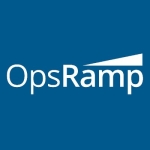What is our primary use case?
We use this solution for infrastructure monitoring and application monitoring. Predominantly, it is for infrastructure monitoring in the Microsoft space.
How has it helped my organization?
This solution helps our application teams by allowing them to drill further into issues and perform a root cause analysis. This is possible because we first built out the monitoring platform and made sure that all of the components were being monitored. Then, we created a distributed application view, which is a drawing of all of the components being monitored for each application. This is what we then provide to the application teams.
What is most valuable?
The most valuable feature is the reporting, and the customization is quite flexible.
What needs improvement?
The end-user components, including the dashboards, the administration console, and the web console, need to be improved.
I would like to see more focus on application monitoring in the next release of this solution.
For how long have I used the solution?
Approximately seven years.
What do I think about the stability of the solution?
The stability is pretty good, although it depends on the infrastructure. We normally end up having issues with hypervisors and SQL servers, but it comes down to how those platforms are being administered, as well. From an application point of view, this solution is pretty stable.
What do I think about the scalability of the solution?
This solution is scalable and very good in terms of availability and performance capability. It is very flexible, but you need to have your training properly done beforehand. If so, then it will benefit you a lot. If you need to expand at a later stage then you can do that as well.
We currently have more than three thousand users that vary from managers to developers and engineers.
How are customer service and technical support?
I have never had to contact technical support.
Which solution did I use previously and why did I switch?
Personally, I have used an in-house solution and I have used SolarWinds before. It was not a case of switching because these were with different companies.
How was the initial setup?
The initial setup depends on the size of the environment, but on average, it will be more complex than straightforward.
The complexity comes from understanding the various components that contribute to monitoring a specific item on the server. First, you have to understand the Management Pack. Then, you move on to the workflows, and this leads to understanding the rules and monitors. There are bits and pieces that you need to understand in order to make it work properly in your particular environment. This will further depend on things like whether you have restrictions in place, or whether the networking is good or bad. All of these things play a role.
While the deployment time varies depending on the environment, on average, deployment takes about five months.
What about the implementation team?
All of the companies that I have worked for have handled it internally.
One person is suitable for deployment, although this again depends on the company and the environment. If one person is in charge of the SQL environment and the hypervisors then they can do it alone. Obviously, if other departments are in charge of these things then they will need to be relied upon, but generally, it can be done with one person.
With respect to maintaining the solution, a team of three people, with two juniors and one senior, might be ideal.
What's my experience with pricing, setup cost, and licensing?
If you have a Microsoft Enterprise Agreement, then this is part of the agreement.
What other advice do I have?
My advice to anybody looking to implement this product is to plan properly.
Overall, this is a good solution, but there is room for improvement in application monitoring and the dashboard.
I would rate this solution a seven out of ten.
Disclosure: I am a real user, and this review is based on my own experience and opinions.

















